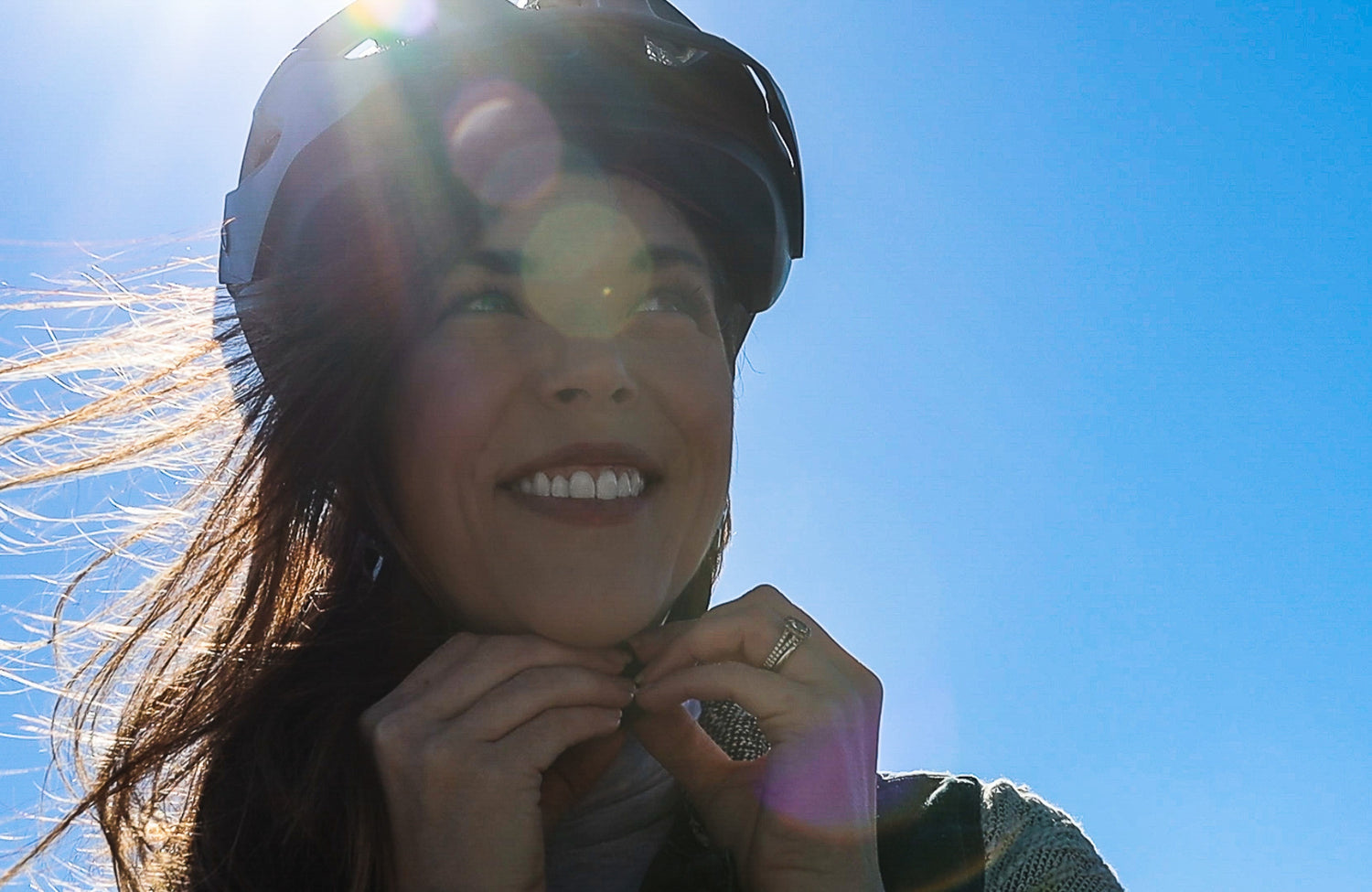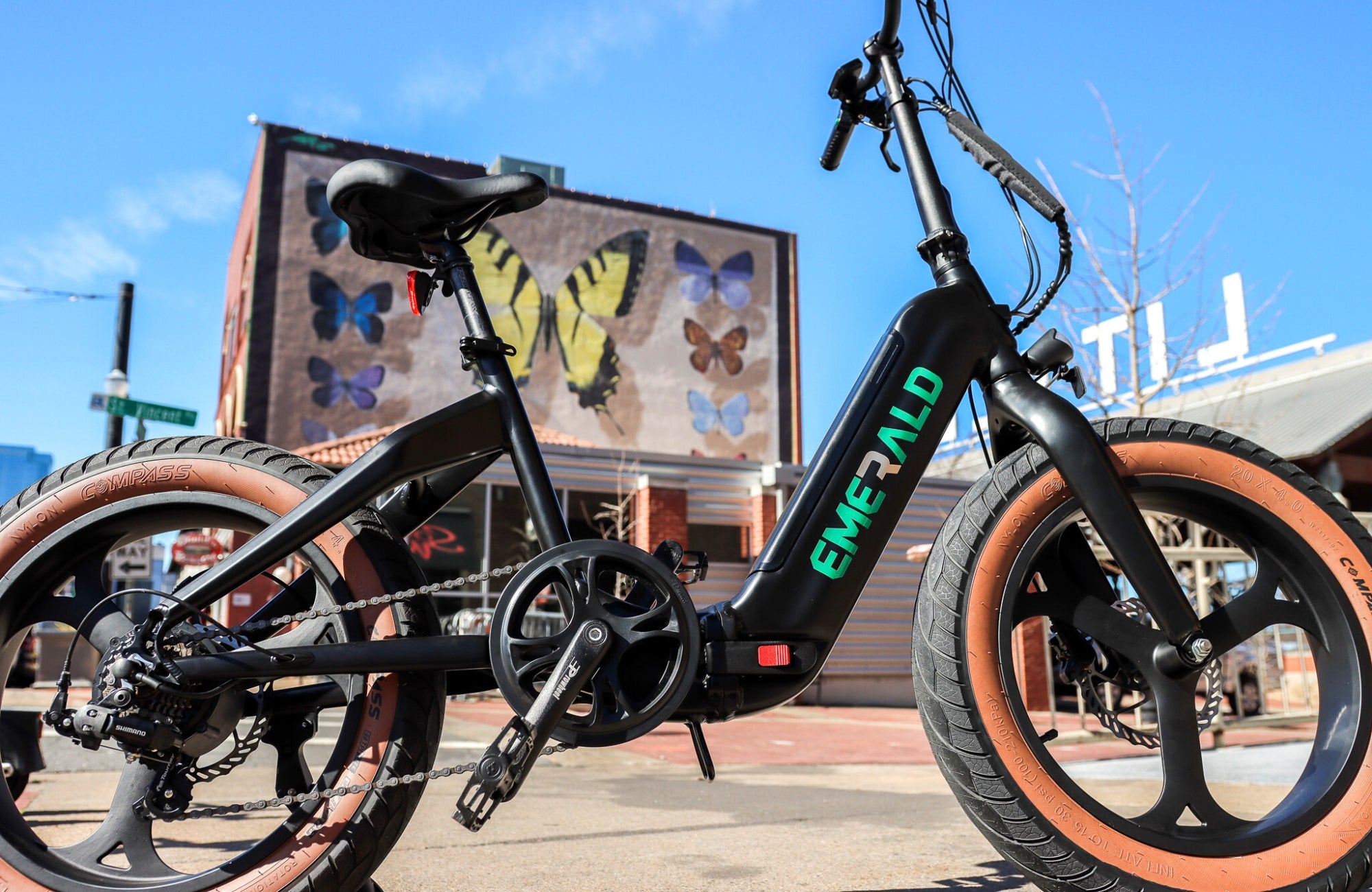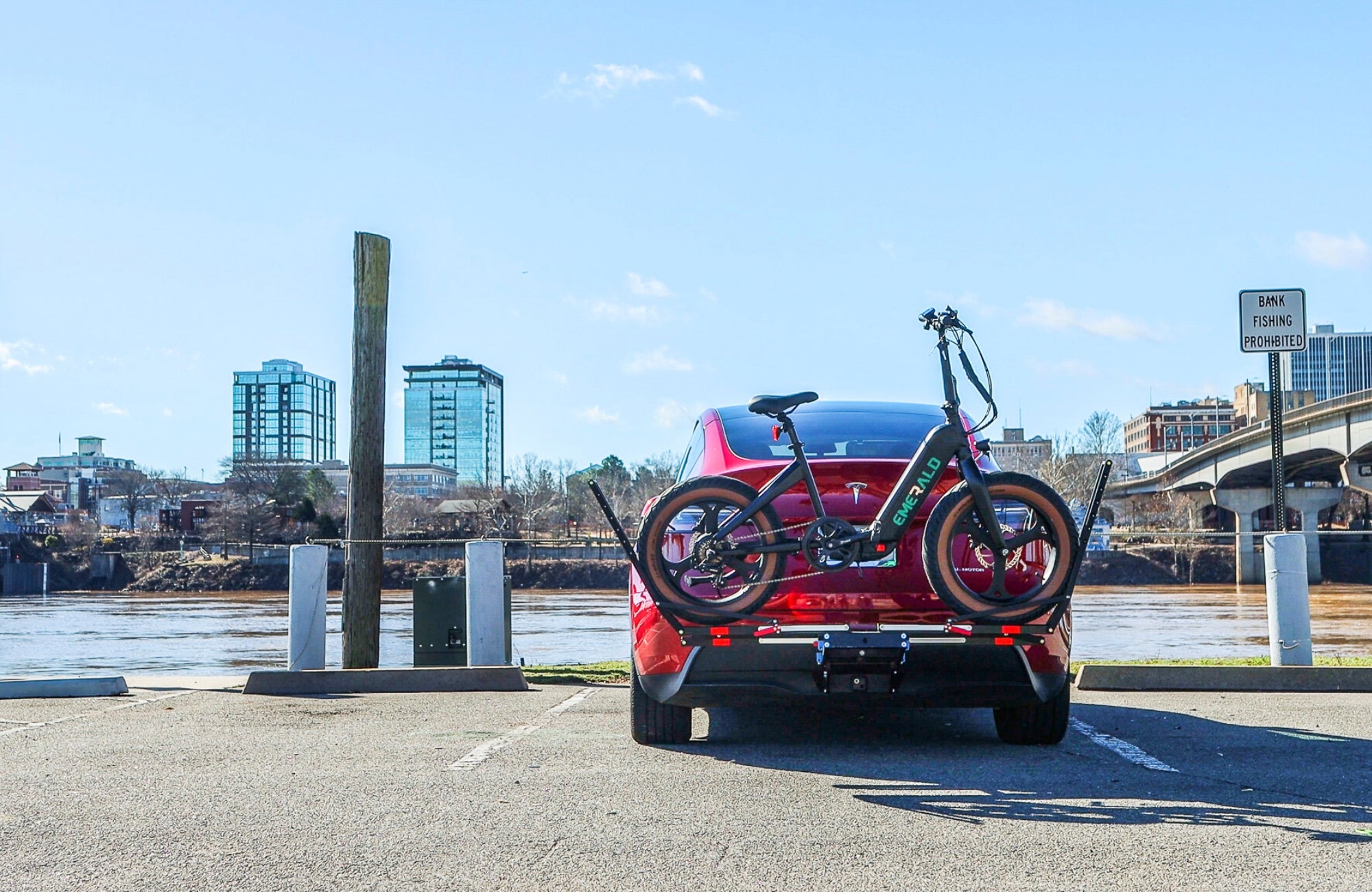As fun as ebikes are, they can also be riskier to ride than nonmotorized bikes. The same motor that boosts your climbing power and maximum speed can make the bike harder to control, especially for newer riders. Knowing how to safely maneuver them and control the speed can keep you out of trouble.
Check out these safety and accident prevention tips for safer riding.
(To check out our bike, click the banner below!)
Always Wear a Helmet
Spills can happen at any time. Whether you're cut off by another cyclist on the road or took a turn too quickly on the trail, you can take a tumble easily on your bike. One of an ebike's greatest pleasures ― its powerful motor ― can also make it more dangerous and harder to control. Especially for newer riders.
A properly fitting helmet can reduce the impact of a hard blow to the head. You'll know it fits right when it's comfortably touching the head all the way around. For complete side coverage, the helmet should sit as low as possible on the head. The strap should be snug ― not too tight or too loose ― to secure the helmet in place.
Helmets can be adjusted in various ways. Several use rings that can be tightened for maximum security. If the helmet feels wobbly when the ring is loosened, it might not be right for you. You can also adjust the straps. Not sure your helmet is snug enough? See if you can move the side buckle with your hand. If so, that means the helmet can move around as you ride.
Considering the average ebike can go twice as fast as a nonmotorized bike, it's not surprising that accidents happen more frequently. They can also lead to more serious injuries. One study found that ebike riders were more likely to suffer from internal injuries requiring hospitalization than nonelectric riders. Ebike riders are also three times more likely to collide with a pedestrian. Besides a helmet, accessories, such as gloves, knee pads, and elbow pads, can reduce your risk of getting hurt if you crash.
Read the Manual
Even if you're comfortable riding a nonmotorized bike, an electric bike is much different. The best way to understand your bike's intimate details is through the owner's manual. Some manufacturers also offer online videos. Even if you've ridden an electric bike before, each model is slightly different. Some have higher maximum speeds or pedal-assist levels. Other bikes might be heavier or have beefier tires that are harder to turn.
Tucked onto the frame or underneath the rear rack is a motor that can launch the bike up to and sometimes over 20 miles per hour. You can boost your speed easily by pushing a throttle or toggling to a higher pedal-assist level on the digital controller. To better avoid an accident or injury, you should know how to work the controls and when to use them. Knowing when to decrease the power can also keep you and others much safer.
Understand How the Components Work
If you've ridden a bike before, you're probably familiar with the gearing basics. Most bikes have a variety of gears. The combination you choose can make it easier to climb hills or go faster on flats. Electric bikes also have gears, but they're slightly different. Some have wider ranges than nonmotorized bikes. You can thank the powerful motors for that extra boost. With more speed in the pedals, you can generally go faster and farther with ebike gearing. Even the fittest cyclists can't match the speed and power of an electric bike motor.
Just as you can adjust the pedal-assist levels, you can shift gears like you would on a nonelectric bike. Knowing how and when to adjust the gears to match the motor output can help you climb hills and cruise on the bike path when your legs are tired. It can take some trial and error to learn the best combinations for your bike.
Keep the Battery Charged
Without enough charge, the battery that powers your ebike's motor can be significantly diminished. It might stop working entirely. When this happens, you're left with 100% of the pedaling. It's possible to pedal an electric bike without the motor, but your legs could be under a lot of stress. Most ebikes weigh between 50 and 60 pounds. Imagine trying to pedal that extra weight up a hill or along a flat road. The effort could leave you very tired. If it's too hard, you might be forced to walk your bike home.
You can avoid these distressing scenarios by keeping the battery topped up. Most ebikes have LED indicators on the stem or the battery to give you an idea of the current status. A glance at the digital controller can give you a specific percentage. Some also have apps that tell you the battery status and charge levels. Planning a long ride? Be prepared by topping off your battery before heading out.
Practice Your Riding Skills
Even if you're an experienced cyclist, an electric bike can have a steep learning curve. Before hitting the road or trails, take a spin or two around your neighborhood or local park. An empty parking lot is another option. Practice controlling the bike and gradually increasing the speed when you aren't near other people or vehicles. You can test the different pedal-assist levels. If your bike has a throttle, try taking off from a stop or increasing the power, as if you need to pass someone.
You can also practice balancing. Electric bikes are quite heavy, and it can be much easier to lose your balance. That extra weight can make cornering more challenging, for example. Whether you plan to take your bike on the trails or want to avoid wiping out, take a few tight turns and maneuvers to build your confidence.
Know Where to Safely Ride
Some places are clearly defined for certain types of bikes, such as single tracks for mountain bikes and bike lanes for commuters. But where can an ebike go? And is it safe to ride anywhere? The short answer is that there aren't any federal laws against where electric bikes can go. They're generally allowed wherever regular bikes can go.
Just remember, many jurisdictions have laws and regulations about where you can and cannot ride ebikes. All riders should learn and obey all laws and regulations that apply where they intend to ride their ebike.
Electric bikes are also divided into classes. Regulations may vary by state. Class 1 bikes often have pedal assistance but lack a throttle. The maximum speed is 20 mph. If you go over the limit the motor stops. A Class 2 bike also has a maximum speed of 20 mph and comes with a throttle. If you commute to work or want to ride recreationally, the extra power boost can be very rewarding. Class 3 bikes have a higher maximum speed of 28 mph. Most also have more powerful motors and are great for trail riding.
To check out our bike, click the banner below!










Leave a comment
This site is protected by hCaptcha and the hCaptcha Privacy Policy and Terms of Service apply.